So This Post is going to be a little different, It is not about the “Best Of” or “Best Selling” etc. I am going to look at Espresso Machines variations and brewing methods.
Why you may ask, Because, I have always wanted a high-end Espresso Coffee Maker but was never sure in which direction I should go, Oh and my wife could not understand just why I
needed another coffee maker seeing as I already have three. And where did I intend to put it in her kitchen? So the struggle continues.
I thought it would be appropriate to start with how these Espresso Coffee Makers work, in my research I have found out that they do not all use the same method. So let’s Go.
The Basic Principals Of an Espresso Coffee Maker
An Espresso Coffee Maker works by forcing pressurised water at close to boiling point through a so-called – puck – of coffee grinds and a filter to produce a concentrated coffee called Espresso.
The first machine was built and patented in 1884 by an Italian by the name of Angelo Moriondo.
How are Espresso Machines Driven?
So this is where I learnt about the different methods used in the machines- They can be Steam Driven, Piston Driven, Pump Driven or Air Pump Driven. So Let’s Look at Each method
STEAM DRIVEN
A steam driven machine works by forcing water through the coffee by using steam or steam pressure. This was the method used by the first Espresso Machines and is still used today in
less expensive machines due to the lack of parts needed. The pressure developed by these machines is not as high as some of the other methods and as such does not produce
the best crema
Mr. Coffee
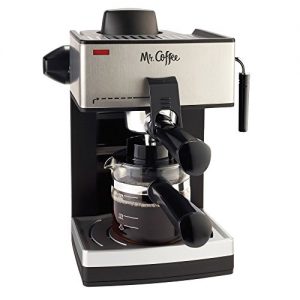
PISTON DRIVEN
It is known as a Piston or Lever driven. This method was developed by Gaggia. So a lever is pumped by an operator to pressurize the hot water and then sending it through the coffee.
There are two types of lever machines, a manual piston where the operator pushes the water through and a spring piston where the operator creates a tension in a spring that in turn pushes the water through the coffee. These Espresso machines are sometimes referred to as Manual Espresso Coffee Makers
La Pavoni
PUMP DRIVEN
Moving on from the Piston Driven, the Pump Driven method was first introduced in 1961. This type of machine has become the most popular in coffee bars and shops. These machines use an electrically driven pump to force the water through the coffee. These machines typically have a high pumping pressure and better flow control. So there are variants of this method.
Capresso
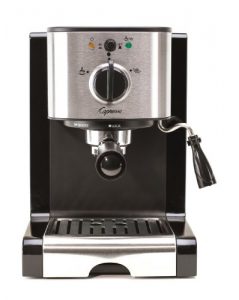
Single Boiler
These machines can brew only and not steam , some have a steam wand as an add-on extension
Rancilio Silvia
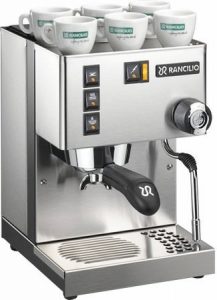
Single Boiler – Dual Use
Some home Espresso machines use a single boiler for brewing the coffee and to boil water for the milk steaming. They can not do both processes at the same time and need a period of time to move from one to the other. The steam for the milk frother is a higher temperature than that used for the brewing process so there is a transition time from one to the other. Again this method is found in the less expensive home machines and they normally come with a wand for the steam.
Gaggia Classic
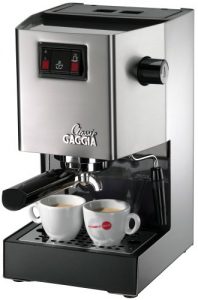
Heat Exchanger
Some machines that have a single boiler keep the temperature high for the steam process, this, however, is too hot to brew the coffee so the water is passed through a heat exchanger taking some heat but not as high as the steam, however, the water is still too hot and requires a cooling flush before the first Espresso, once the machine is at the right temperature “dialled in “ you can do many shots without a refresh, if however the machine is left idle for a time , the cooling flush has to repeated. This system is found in many mid-range machines.
Expobar
Dual Boiler
These machines that are for home or commercial use, the water is heated in a separate chamber, which needs two separate boilers or chambers. So these machines there is a boiler for brewing and a separate thermoblock to heat the brew water to steam temperature. These machines have a more stable brewing temperature, but steaming performance suffers a little. Proper Dual Boiler machines have a stable brew temperature and faster steaming but are quite a lot bigger and expensive. The dual Boiler method is found in high-end machines and mid-range machines at the upper price range
Breville
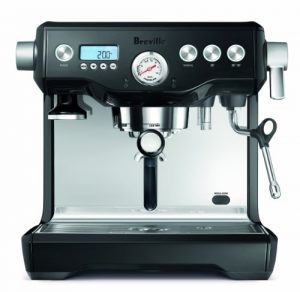
AIR PUMP DRIVEN
These are the newest innovation in machines, They are driven by compressed air that forces the water through the coffee. The water is generally added from a kettle or thermos and the compressed air comes from a hand pump, CO2 cartridge or an electric compressor. These machines are much smaller and are often handheld and portable. The first of these was the Aeropress that was made available in 2005. There have been other makes added since then.
Mini Espresso
AUTOMATIC ESPRESSO MACHINES
These are machines that have all the required pumps, valves etc to automate the brewing of the coffee.
Semi-Automatic
These machines use a pump and not force to get the water through the coffee, brew pressure remaining is released by way of a valve
Quickmill
Automatic
These machines automate the brewing process via an inline flow meter so when the programmed amount of water passes through, the pump turns off. However manual grinding is still required
DeLonghi
Super Automatic
These machines do it all. Grind the beans tamp it down and brew your espresso shot, all the operator has to do is make sure there are beans in the hopper and there is water. Because of the automated process, there is not as much control in the brewing so it could affect the quality of the brewed shot of espresso. These machines tend to be a bit more compact than machines with separate grinders.
Jura
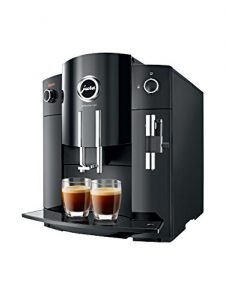
So there you have what I found out. When I am ready to get one of these espresso coffee makers, after getting the wife on board, I will get a manual or semi-auto machine as they seem to give you the most control over your brew.
I hope you enjoyed this and found it helpful for when you choose your espresso coffee makers
As Always – Keep On Brewing
